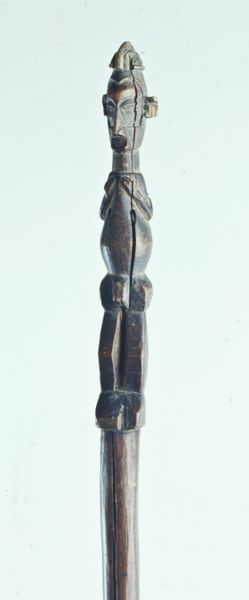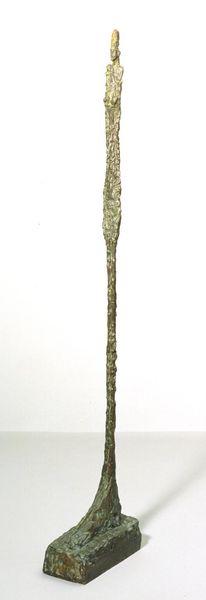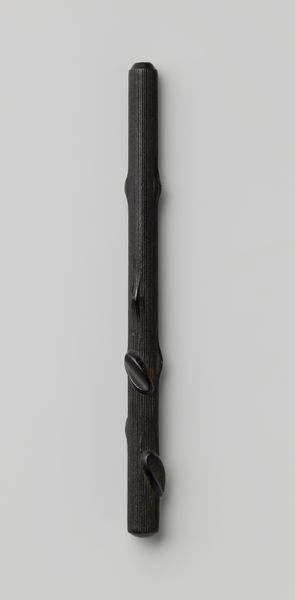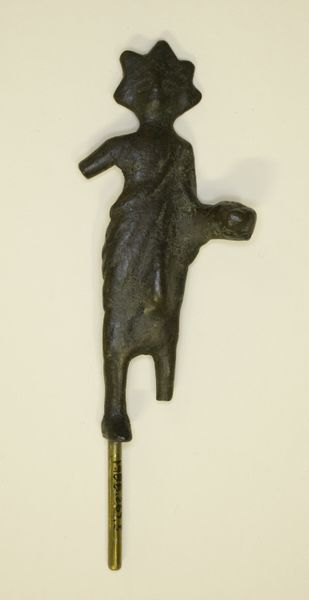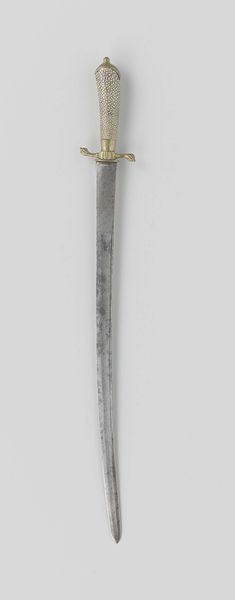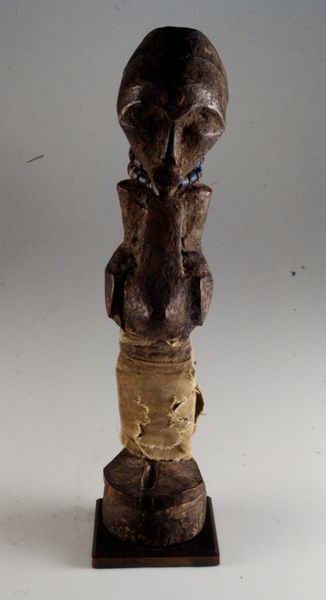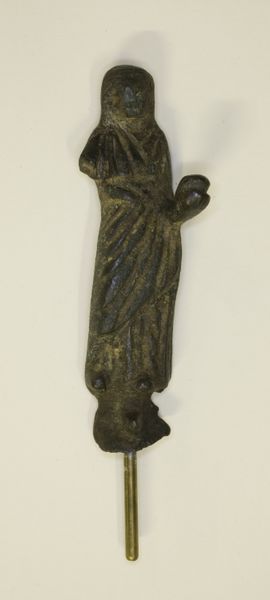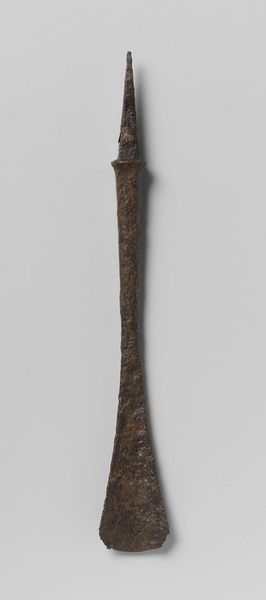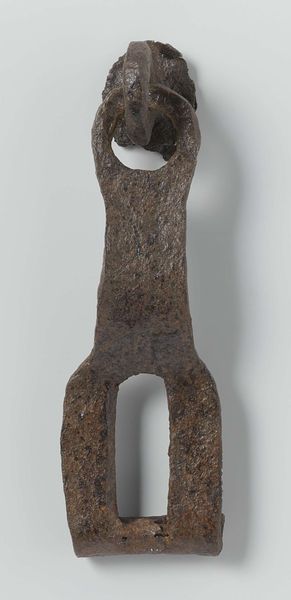
Dimensions: object: 686 x 140 x 270 mm
Copyright: © The Estate of Alberto Giacometti (Fondation Giacometti, Paris and ADAGP, Paris), licensed in the UK by ACS and DACS, London 2014 | CC-BY-NC-ND 4.0 DEED, Photo: Tate
Editor: Here we have Giacometti's "Standing Woman", a bronze sculpture at the Tate Modern. It's incredibly elongated and fragile-looking. What social commentary do you think Giacometti was making with this piece? Curator: Considering the post-war context, this sculpture embodies a sense of alienation and dehumanization. Giacometti presents a figure stripped bare, vulnerable, reflecting the anxieties about the human condition prevalent after the atrocities of World War II. How does the figure's extreme thinness speak to broader social issues? Editor: It almost feels like a commentary on the physical and emotional toll of war, leaving individuals fragile and barely there. Curator: Precisely. And this fragility can be further seen in relation to gendered expectations of women; examining how women were seen in post-war society, and the societal pressures they faced. These works encourage us to question power dynamics. Editor: I hadn't considered that perspective. Thanks for illuminating the layers of meaning within this work! Curator: My pleasure. Art becomes powerful when we see it as a mirror to society.
Comments
tatemodern 8 months ago
⋮
http://www.tate.org.uk/art/artworks/giacometti-standing-woman-t00775
Join the conversation
Join millions of artists and users on Artera today and experience the ultimate creative platform.
tatemodern 8 months ago
⋮
During the late 1950s, Giacometti made a number of fragmentary figures with their arms partly or entirely missing. Their slender forms appear vivid yet fragile. The writer Jean Genet (1910–1986) commented: 'The resemblance of his figures to each other seems to me to represent that precious point at which human beings are confronted with the most irreducible fact: the loneliness of being exactly equivalent to all others.' Gallery label, March 2025


